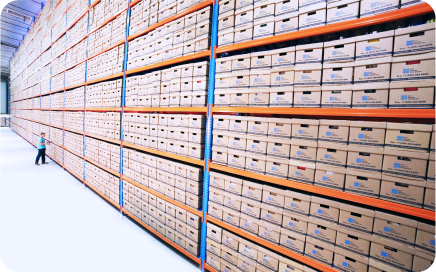Handling Backorders: 6 Tips for Wholesalers with Large Product Catalogs
By Rackbeat September 26, 2025

Backorders are one of the biggest challenges for wholesalers – whether you have 100, 1,000, or tens of thousands of items on the shelves. When a customer places an order, they expect fast delivery. If you have to announce that the item is on backorder, it can lead to delays, lost revenue, and – in the worst case – a loss of the customer’s trust.
For wholesalers with extensive product ranges, the problem becomes even more complex: the larger the assortment, the harder it is to maintain a clear overview of inventory management, purchasing management and order management across the entire value chain. If backorders are not handled correctly, they can result in dissatisfied customers, costly administration, and lost business.
In this article, you’ll get 6 tips on how to reduce backorders and ensure that you handle them professionally when they inevitably occur.
What is a Backorder – and Why Is It Challenging?
A backorder occurs when you cannot deliver an item immediately but only at a later date. For the customer, it means waiting time; for you, it means extra work and the risk of losing the sale.
For wholesalers with many SKUs, backorder management can quickly turn into an administrative nightmare: items have different lead times, some are fast movers, others are niche products. If inventory management and order management are not aligned, it becomes almost impossible to give customers accurate answers.
Tip 1: Get Real-Time Control of Your Inventory
Backorders often arise from a lack of overview. If your stock status is not updated, you risk promising items you don’t have or rejecting an order you actually could have fulfilled.
A modern WMS provides real-time data on stock levels, reservations, and incoming deliveries. For wholesalers with large product catalogs, this is a prerequisite for effective inventory management and backorder handling.
Tip 2: Work with ATP (Available to Promise)
With ATP, you can calculate exactly how many items you can promise to deliver – based on stock levels, reserved items, and expected deliveries.
Instead of giving uncertain answers, you can say: “We can deliver 20 units today and 60 units on Friday.” This builds trust and professionalism. For wholesalers with many SKUs, ATP is a central part of combining inventory and order management for better customer service.
Tip 3: Prioritize Customers and Orders
When you are facing backorders, it’s important to know who should be prioritized first. Is it loyal key accounts, high-margin orders, or new customers where the relationship is just starting?
A clear strategy makes it easier for your team to make decisions and provides transparency to your customers. This strengthens both relationships and competitiveness.
Tip 4: Automate Communication
Backorders only become a real problem for customers if they don’t know when the item will be delivered. If you automate communication in your WMS, customers can receive continuous updates on delivery times.
This saves you time and minimizes frustration – ensuring that even a backorder is handled professionally.
Tip 5: Use Data to Prevent Backorders
Data analysis is a powerful tool for minimizing backorders. By analyzing sales data, you can detect seasonal fluctuations, identify bestsellers, and optimize reorder points.
For wholesalers with many SKUs, this means fewer empty shelves, less tied-up capital, and inventory management that works proactively instead of reactively.
Tip 6: Integrate Purchasing and Order Management
When your purchasing, inventory, and order management work together in one WMS, you get full visibility of deliveries, stock status, and customer orders.
This makes it easier to handle backorders without manual errors, ensures faster processing, and gives customers a more reliable experience.
Conclusion
Backorders cannot be completely avoided – but they can be handled professionally. For wholesalers with large product catalogs, it is crucial to work with real-time inventory, ATP calculations, clear priorities, and automated communication. At the same time, purchasing and order management must be tightly integrated with inventory management in an efficient WMS.
The better you handle backorders, the more value you create for customers – and the stronger your position as a wholesaler in a competitive market.
Get More Insights Straight to Your Inbox
Do you want more tips on how to reduce backorders, optimize inventory management, and get more out of your WMS?
Then sign up for Rackbeat’s newsletter. Every month, we share guides, inspiration, and practical tools that help wholesalers like you take control of their inventory, streamline order management, and strengthen customer satisfaction.
Subscribe to the newsletter here and take control of your backorders once and for all.



